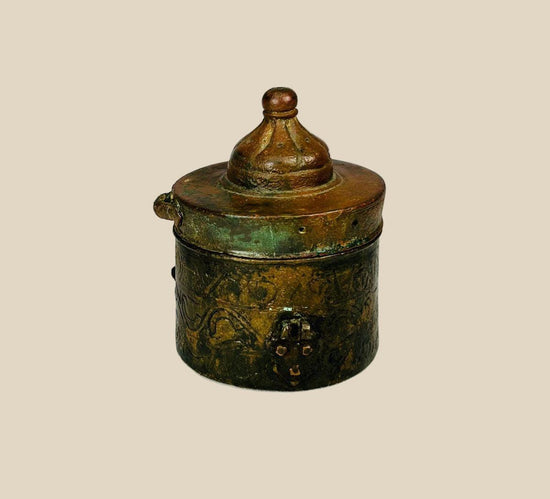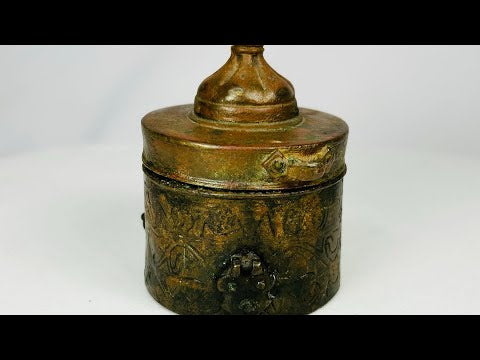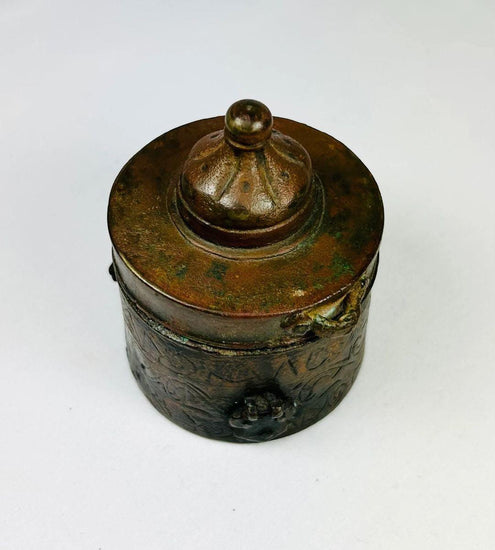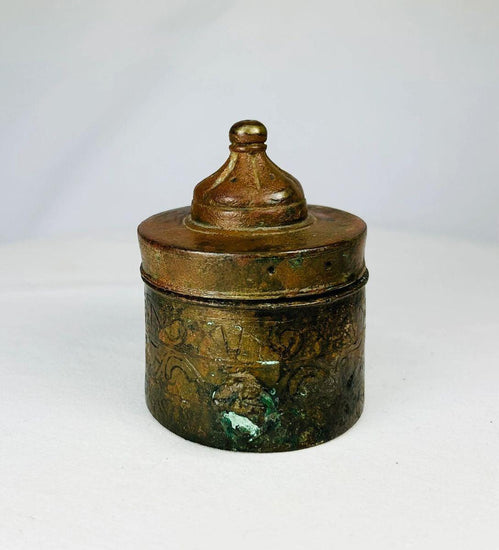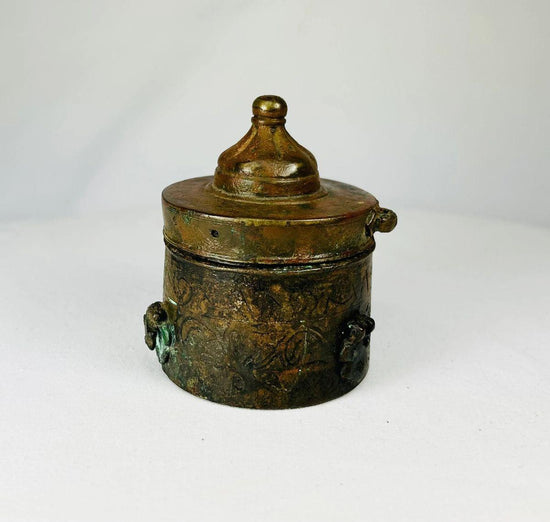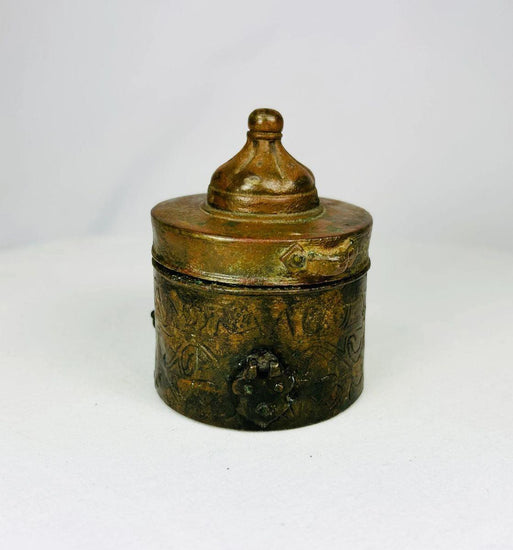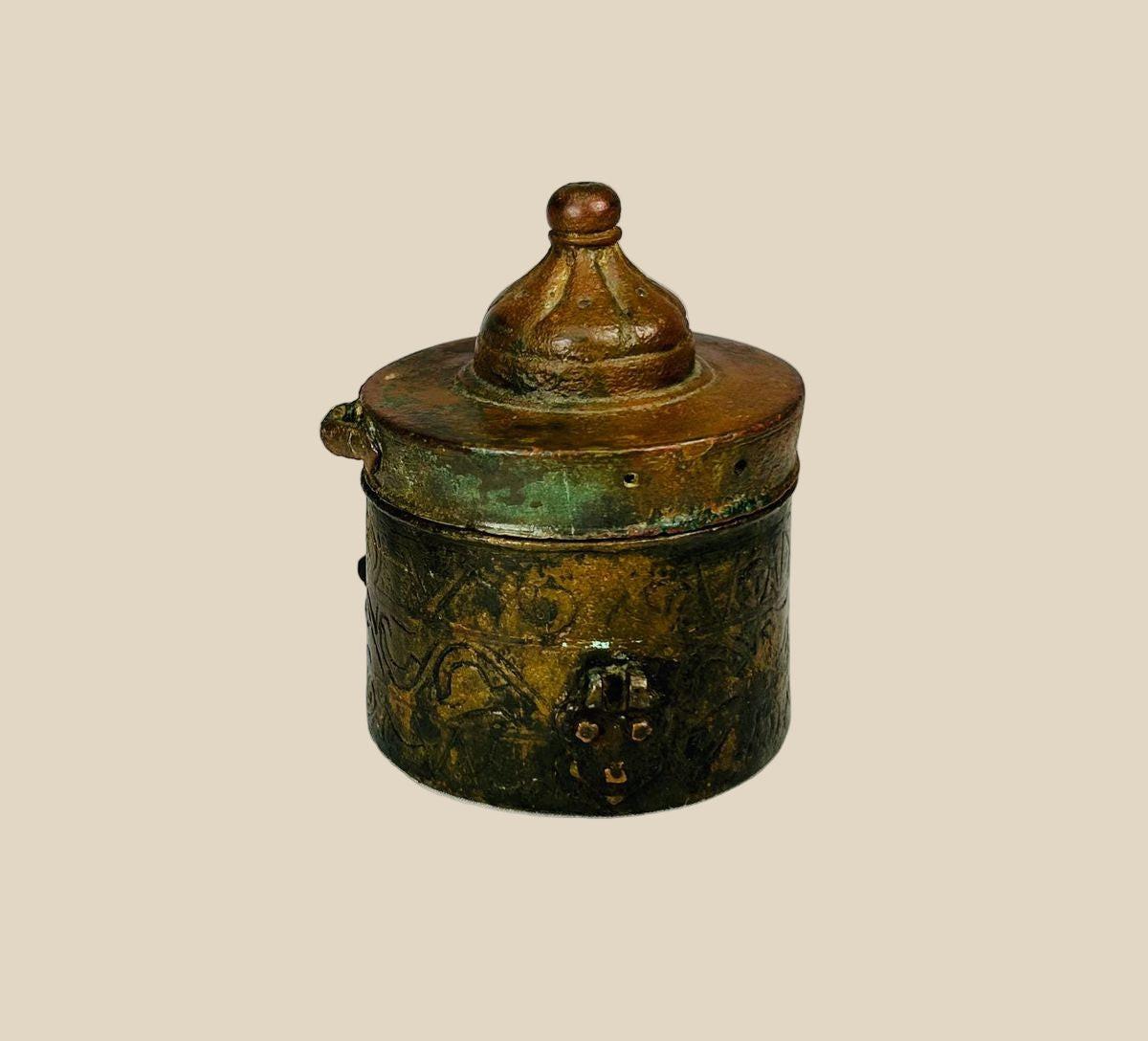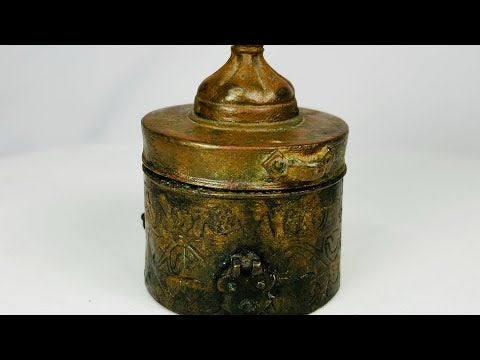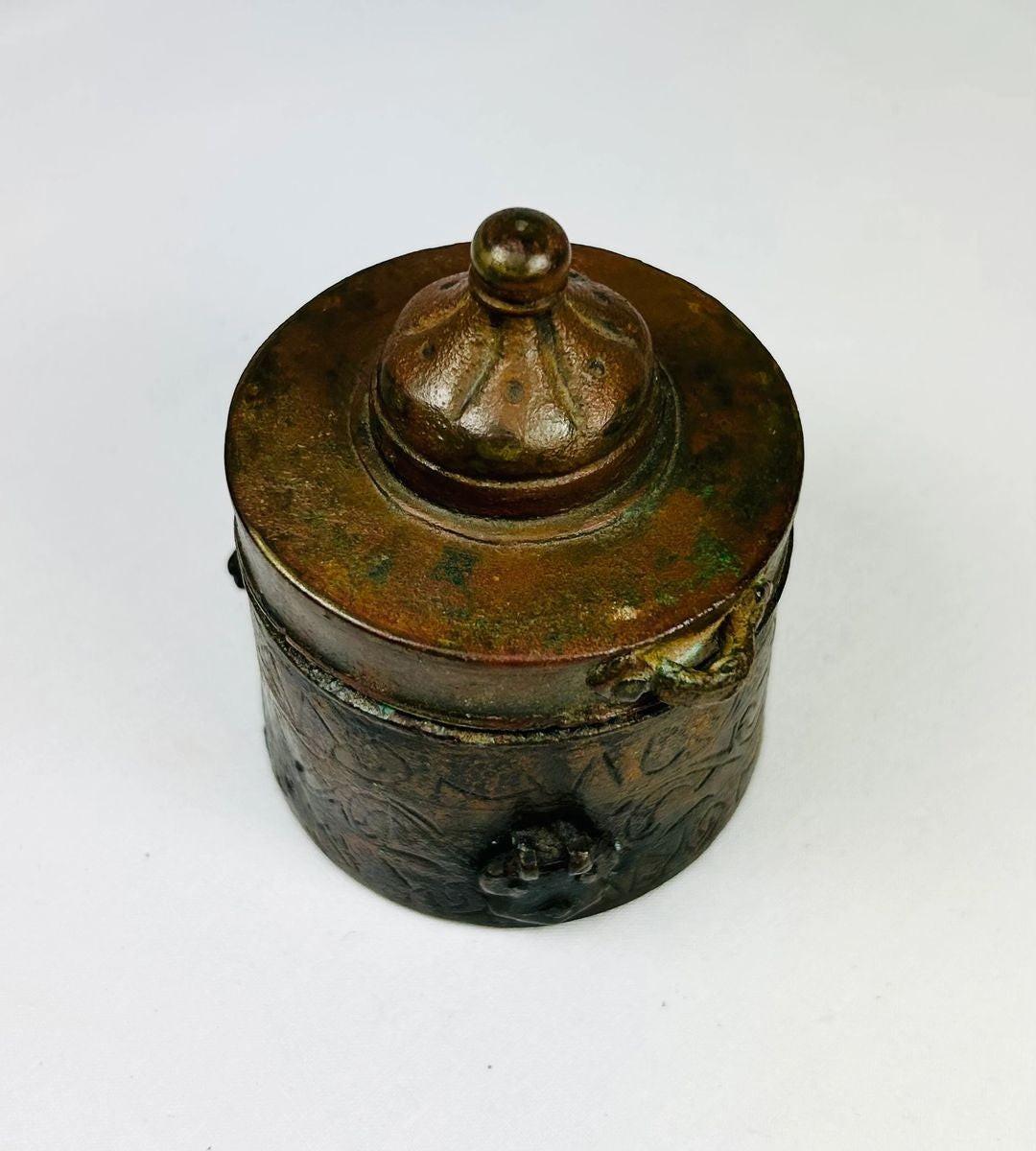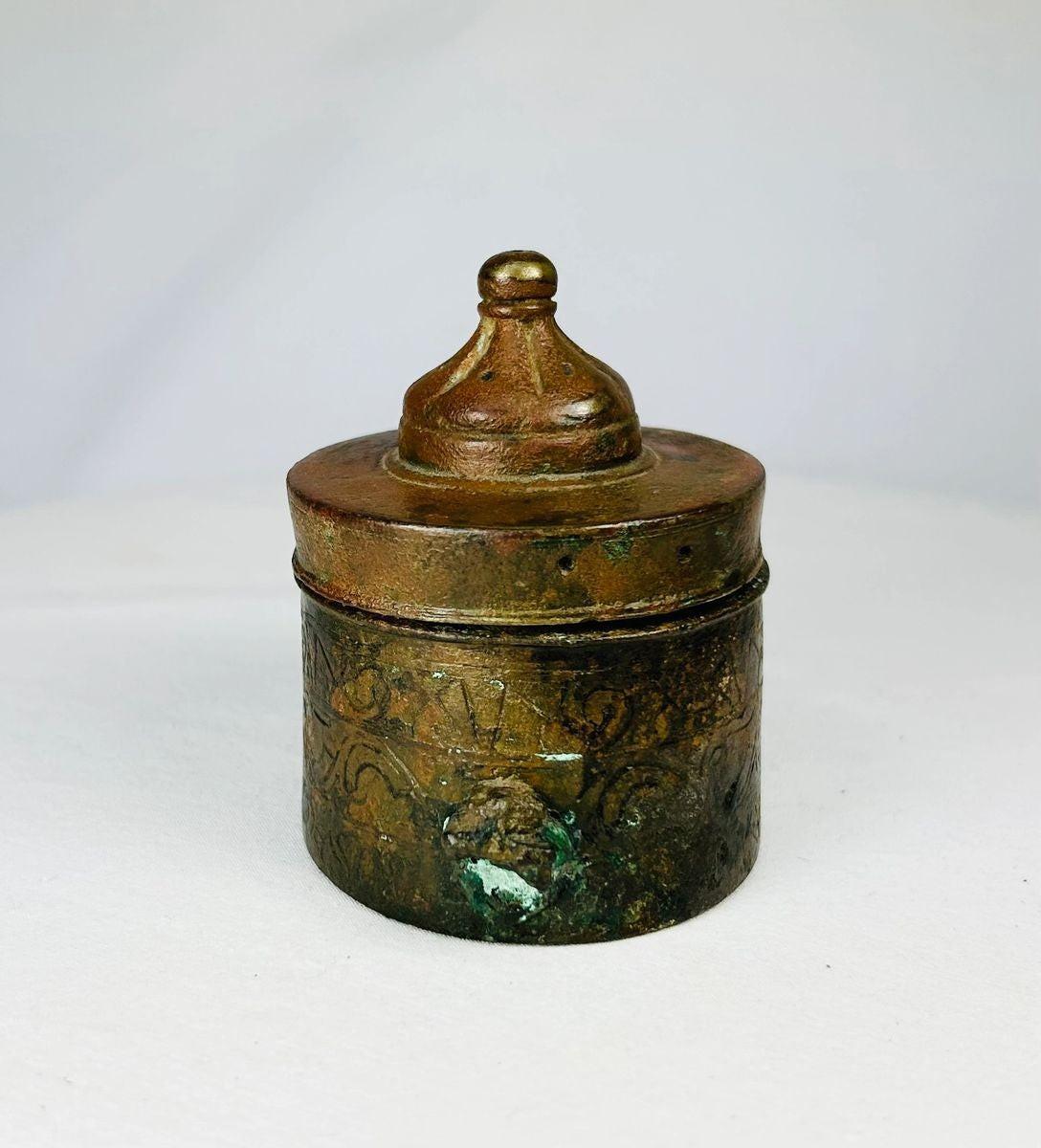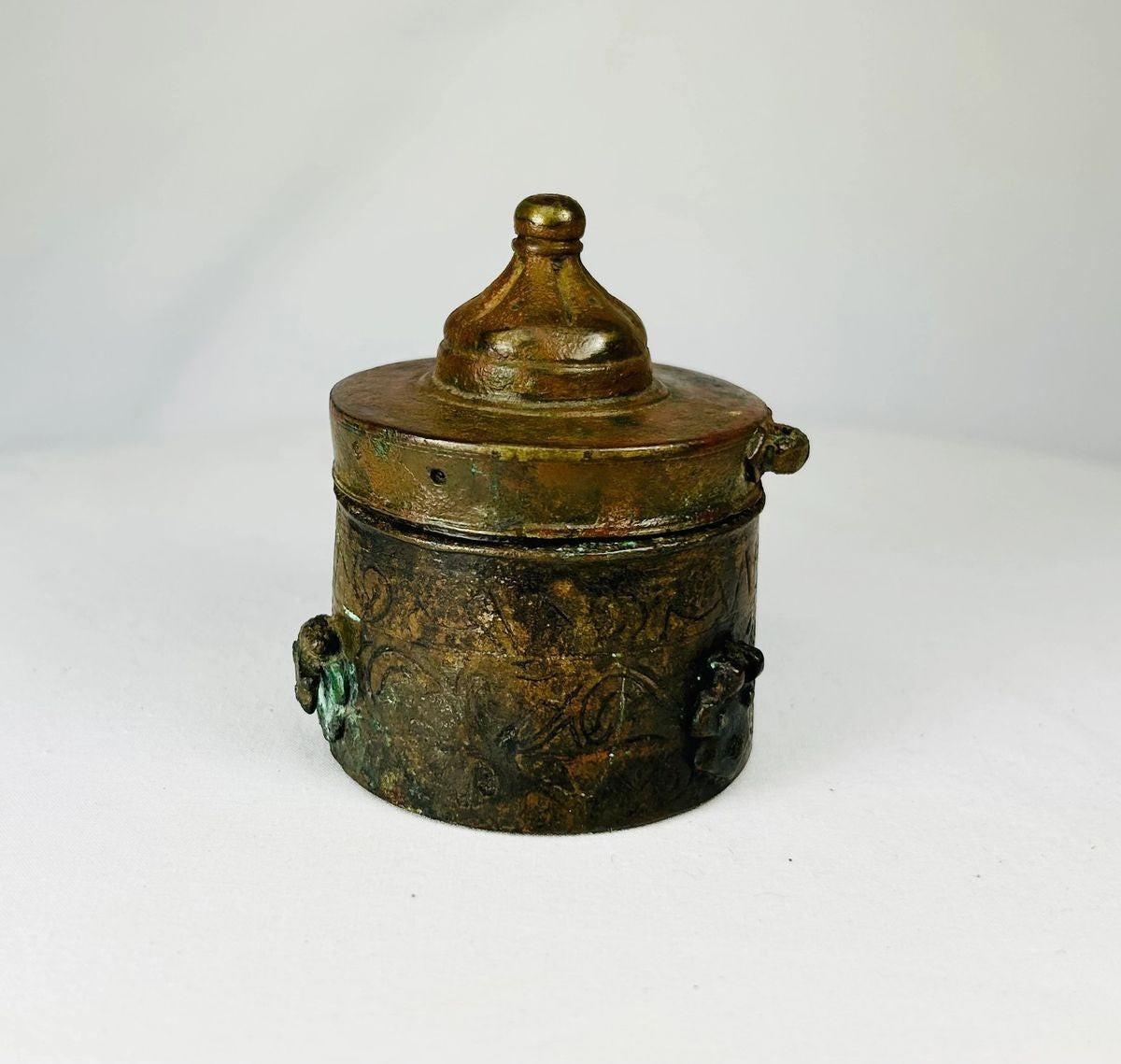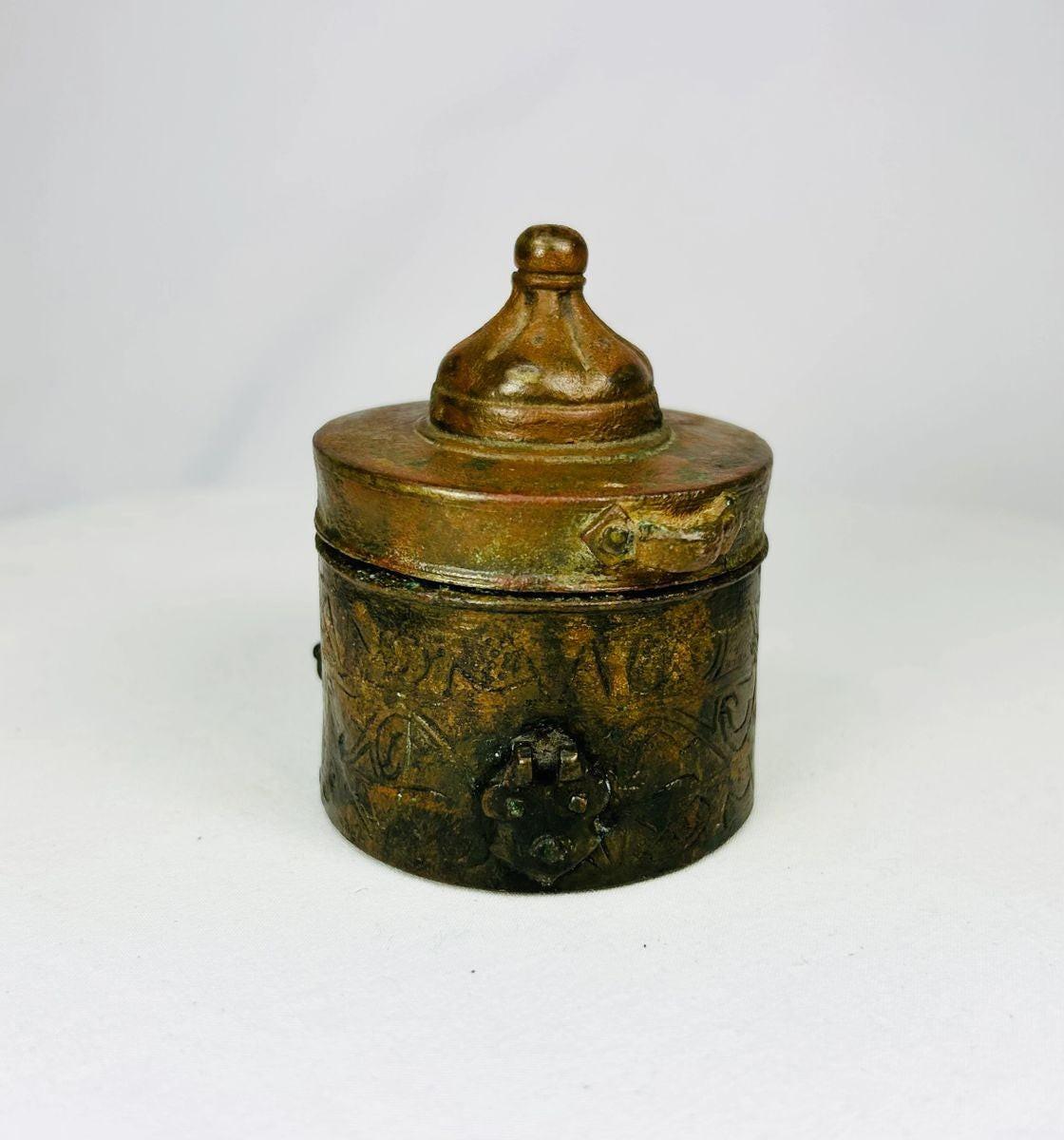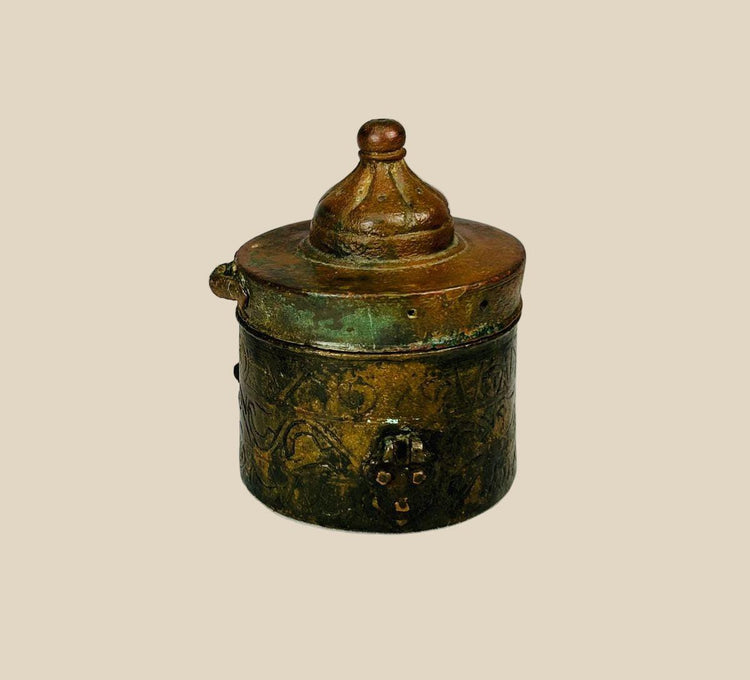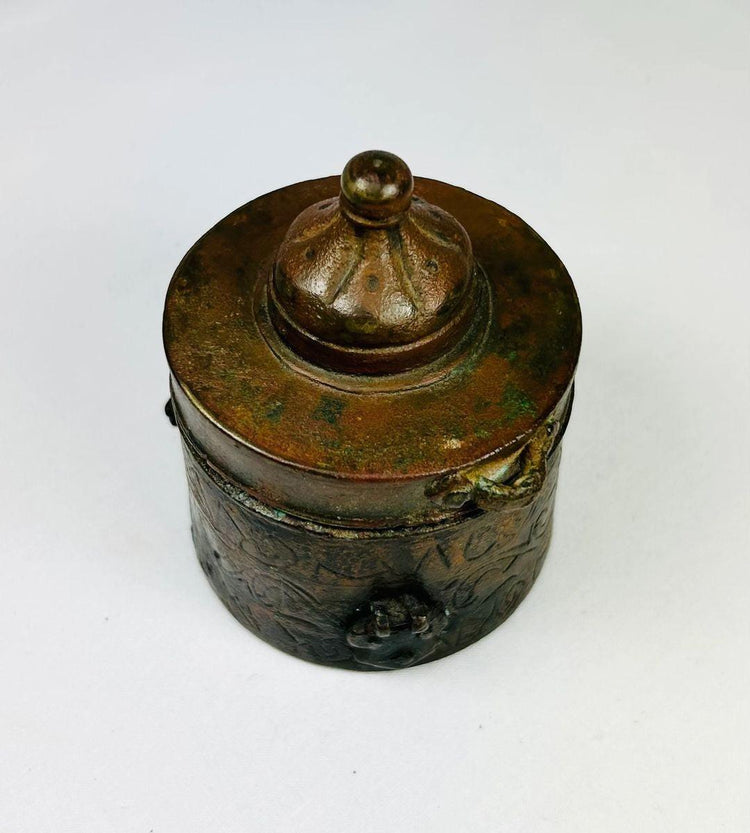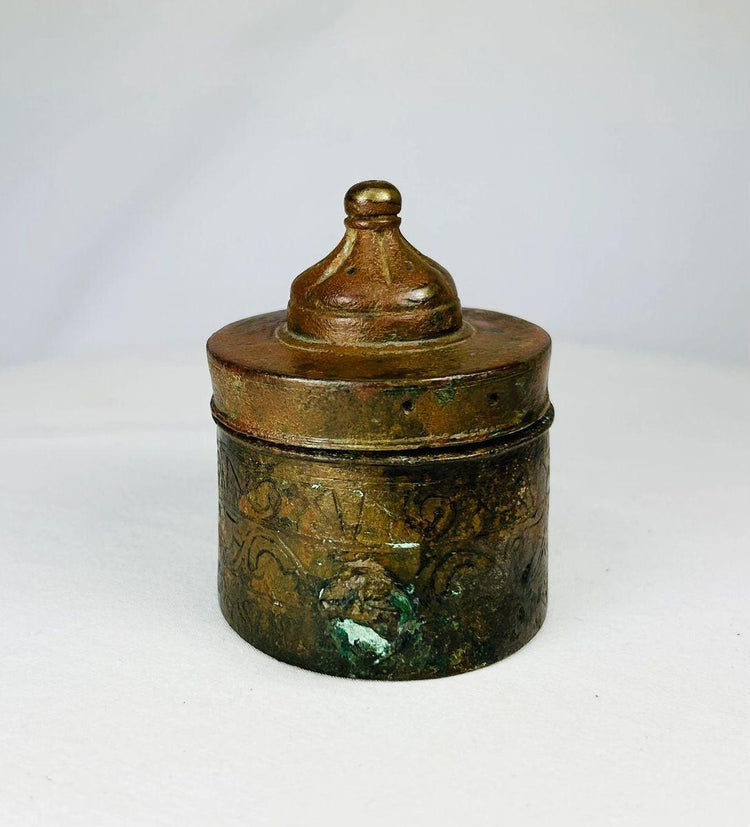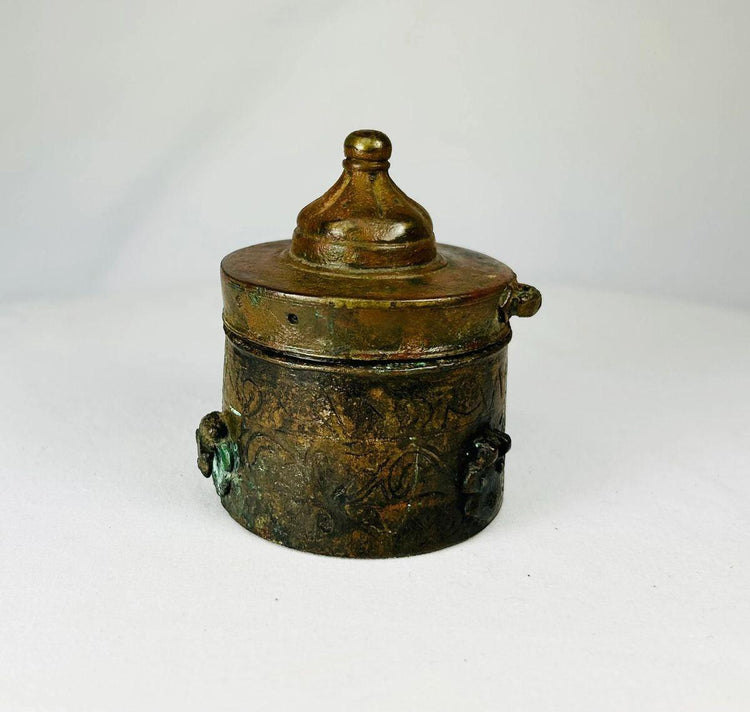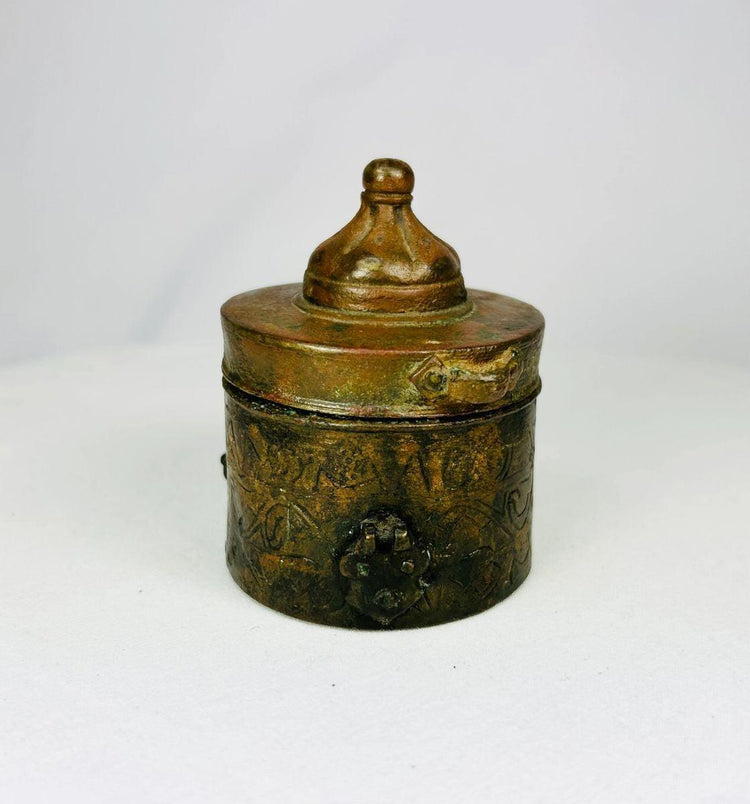Islamic Khorassan | Bronze Inkwell | 10th-12th Century
Description
More
Less
Historical Context & Origin
Region: Khorassan (northeastern Iran, Afghanistan, Central Asia)
Material: Bronze
Period: 10th–12th Century CE
Description
This exceptional Islamic Khorassan bronze inkwell dates to the 10th–12th century, a period renowned for its artistic and intellectual achievements during the Islamic Golden Age. The inkwell is beautifully designed with a domed lid featuring a small handle and a cylindrical body, richly engraved with intricate floral and geometric motifs. Its elegant form and decorative detail reflect the refined craftsmanship of Khorassan metalwork, one of the most celebrated art forms of the period.
Features
- Finely engraved floral and geometric motifs typical of Khorassan artistry
- Domed lid with small handle, cylindrical body form
- Compact design combining functionality with decorative beauty
- Developed patina in green and brown tones, attesting to centuries of age and use
Cultural Significance
Inkwells such as this were essential tools for scholars, scribes, and calligraphers, underscoring the central role of literacy and learning in the Islamic Golden Age. Beyond their practical function, these objects embodied the high value placed on knowledge, manuscripts, and calligraphy as both artistic and intellectual pursuits. This piece would have been a prized possession, symbolizing scholarship and cultural refinement.
Condition
The inkwell exhibits a rich natural patina with green and brown hues, consistent with its age. Surface wear and weathering add depth to its authenticity while preserving its intricate decorative patterns.
Dimensions (approximate)
Height: 3 in
Width: 2.5 in
Age
Circa 10th–12th Century CE
Description
Historical Context & Origin
Region: Khorassan (northeastern Iran, Afghanistan, Central Asia)
Material: Bronze
Period: 10th–12th Century CE
Description
This exceptional Islamic Khorassan bronze inkwell dates to the 10th–12th century, a period renowned for its artistic and intellectual achievements during the Islamic Golden Age. The inkwell is beautifully designed with a domed lid featuring a small handle and a cylindrical body, richly engraved with intricate floral and geometric motifs. Its elegant form and decorative detail reflect the refined craftsmanship of Khorassan metalwork, one of the most celebrated art forms of the period.
Features
- Finely engraved floral and geometric motifs typical of Khorassan artistry
- Domed lid with small handle, cylindrical body form
- Compact design combining functionality with decorative beauty
- Developed patina in green and brown tones, attesting to centuries of age and use
Cultural Significance
Inkwells such as this were essential tools for scholars, scribes, and calligraphers, underscoring the central role of literacy and learning in the Islamic Golden Age. Beyond their practical function, these objects embodied the high value placed on knowledge, manuscripts, and calligraphy as both artistic and intellectual pursuits. This piece would have been a prized possession, symbolizing scholarship and cultural refinement.
Condition
The inkwell exhibits a rich natural patina with green and brown hues, consistent with its age. Surface wear and weathering add depth to its authenticity while preserving its intricate decorative patterns.
Dimensions (approximate)
Height: 3 in
Width: 2.5 in
Age
Circa 10th–12th Century CE
You May Also Like




